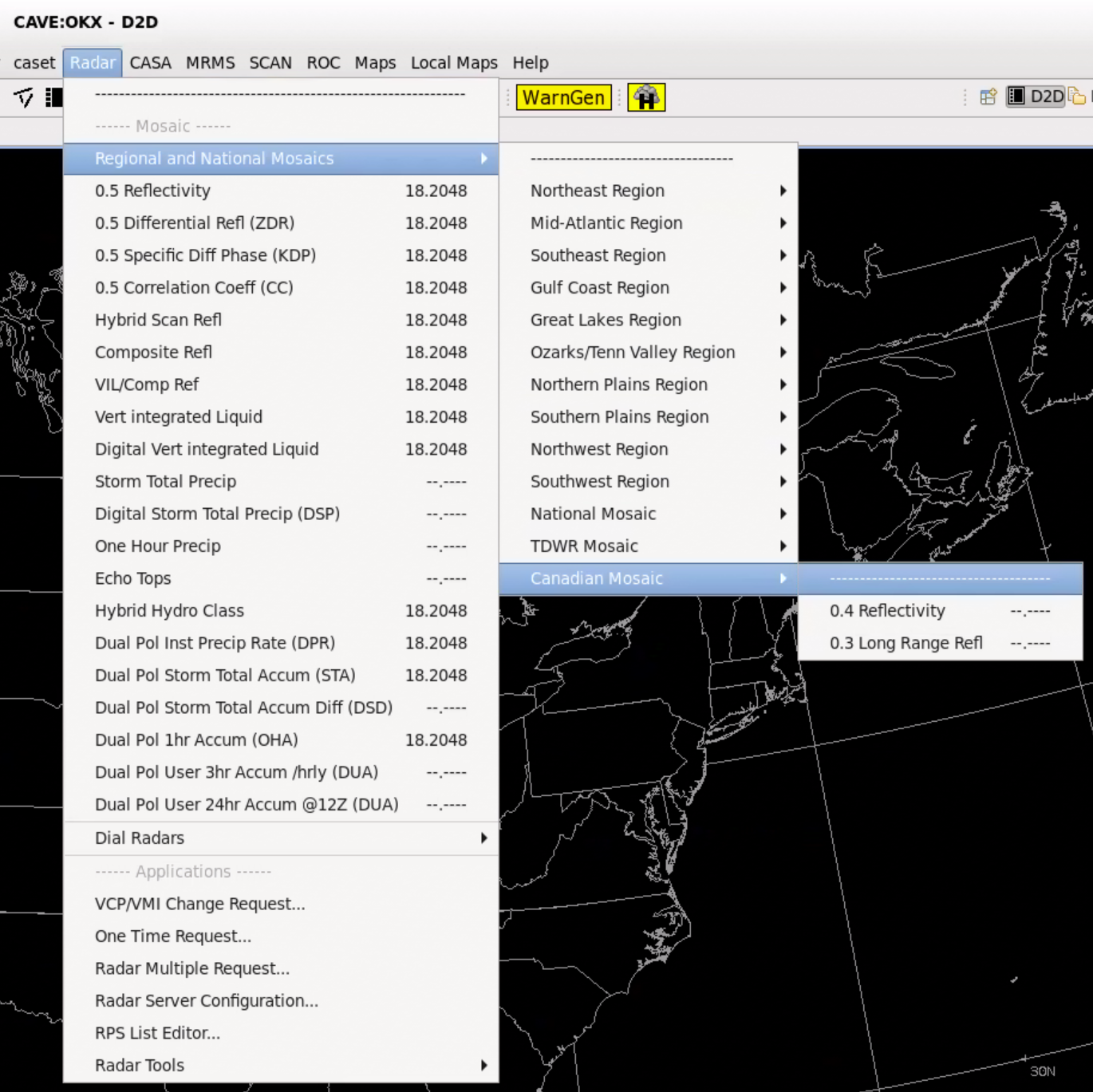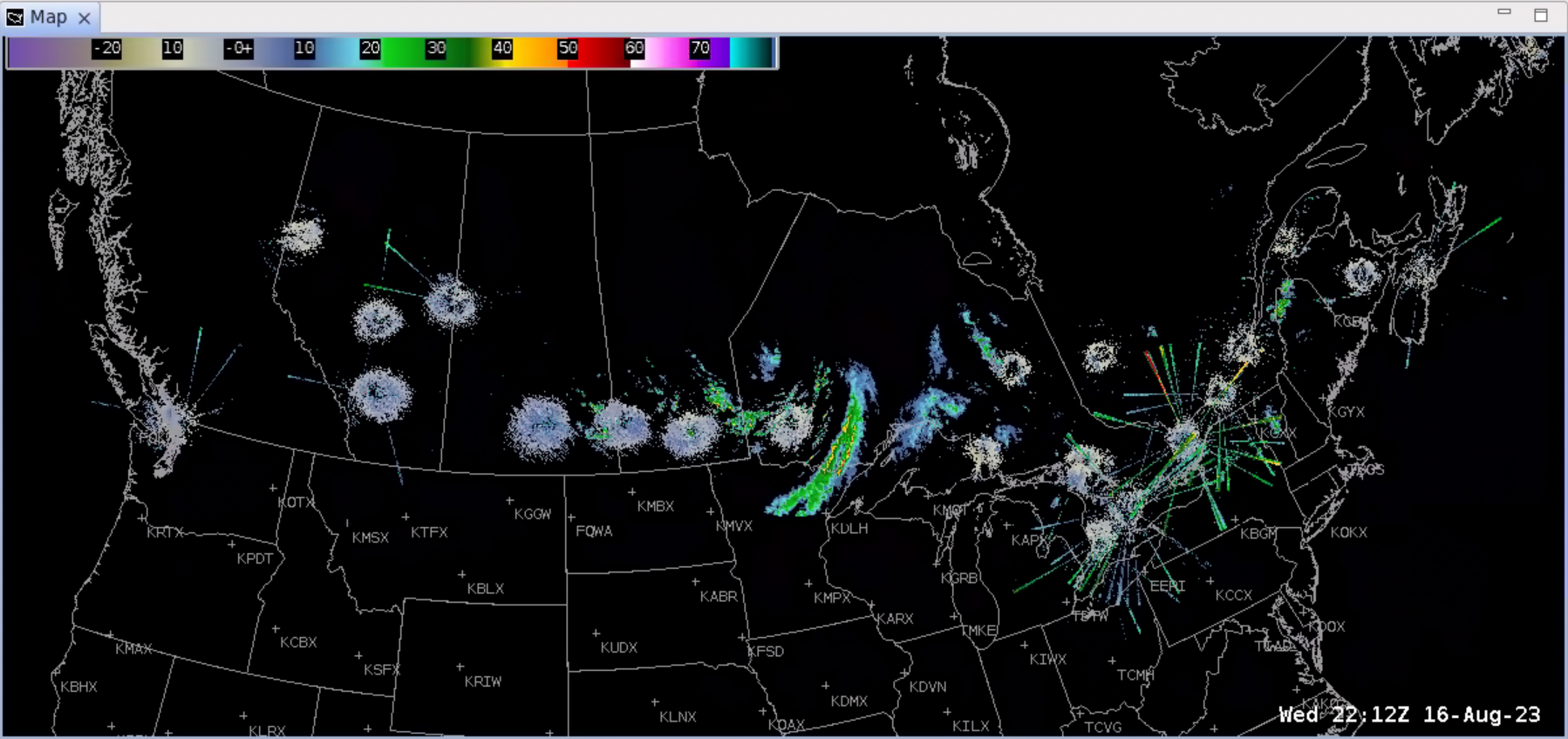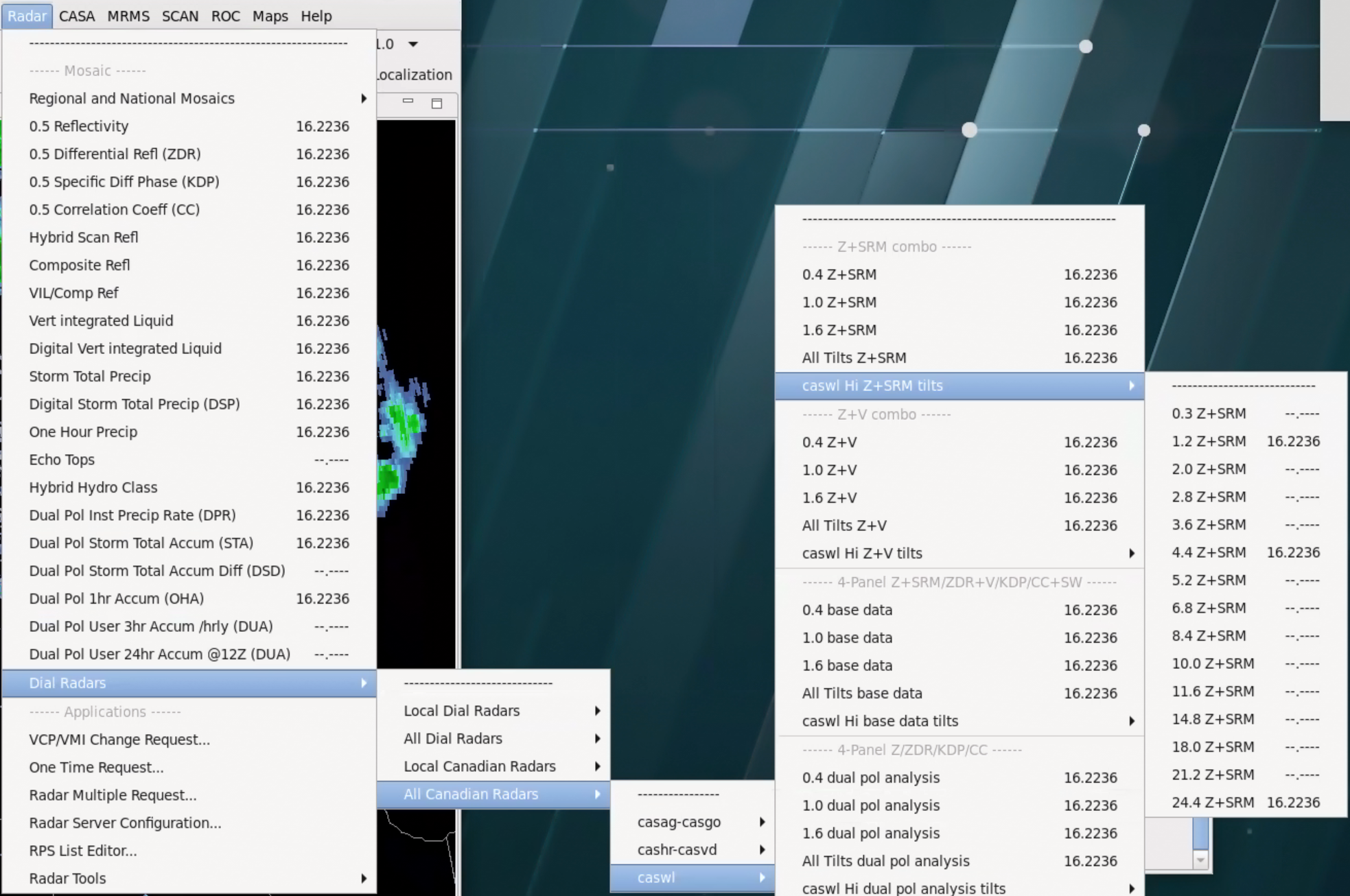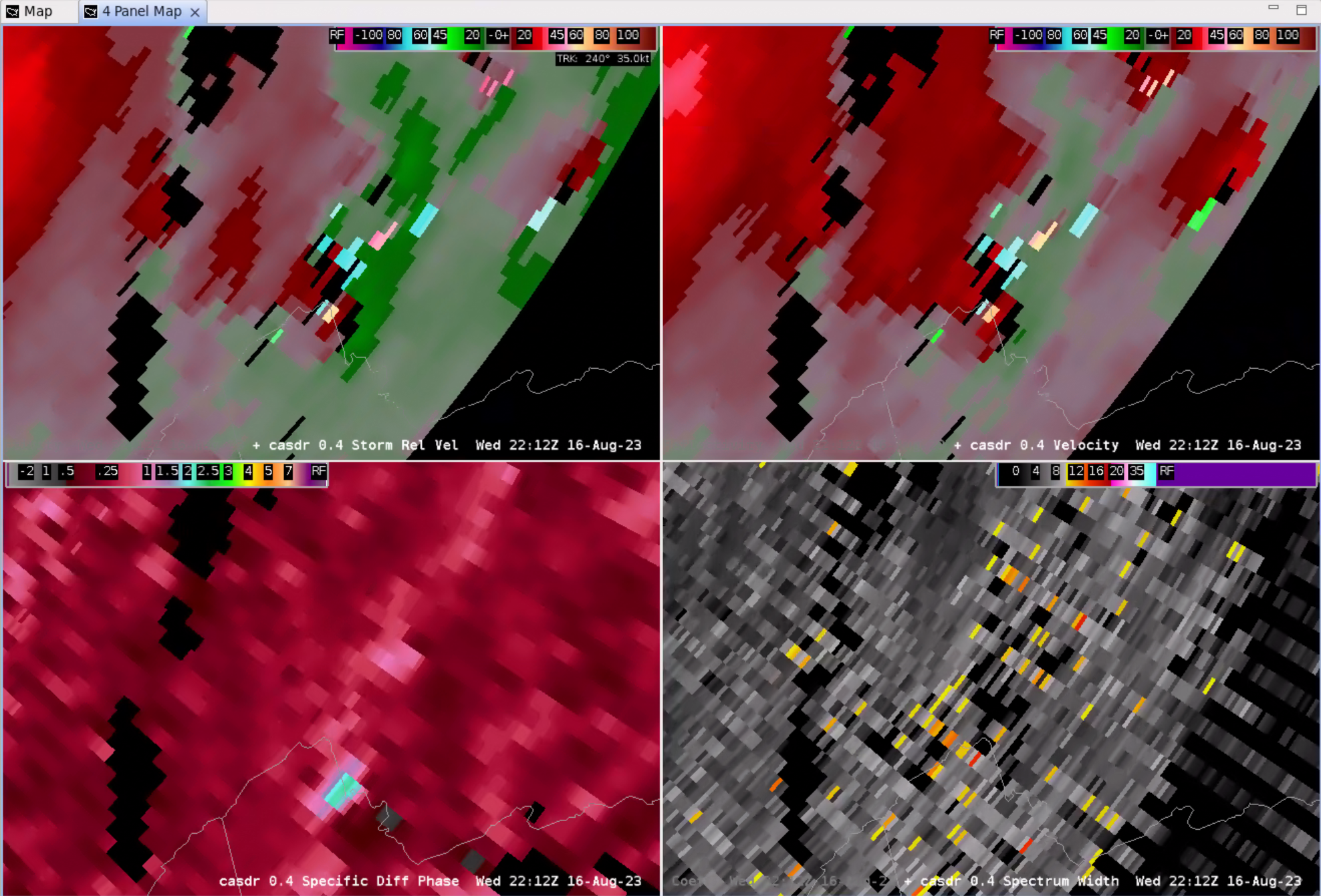Canadian Radars - OCLO
Canadian Radars
Purpose:
This jobsheet reviews the new Canadian radar mosaics and the base radar data that is anticipated to be added to the SBN before the end of 2024.Tasks:
Overview
23.2.1 implemented the ingest and display of Canadian radar data though the SBN (NMC channel) distribution of radar data with a target deployment before the end of 2024. The radar data is very similar to the WSR-88D data except that the Volume Coverage Patterns (VCP) are different, the data can be a little more noisy than the WSR-88D, and there is no hydro classification algorithm for the Dual Pol data. Canada has just converted all their C-band radars to S-band radars, and the NWS only ingests the Canadian S-band radars. The convention for Canadian radar naming is to begin with "ca" (from Canada), followed by "s" for S-Band, then finally with two letters for the radar name identifier (e.g. Woodlands, Manitoba is denoted "wl", giving us a final radar name of caswl).
NOTE: Due to data limits, 24 of the 32 total Canadian S-band radars are being distributed. Most of the available radars are focused along the U.S./Canadian border.
For more information and details on Canadian Radars, please view this reference page.
Loading the Canadian Mosaic
- To load the Canadian mosaic, select Regional and National Mosaics-> Canadian Mosaic-> 0.4 Reflectivity:
 Note: 0.3 Long Range Refl is leftover from no longer used summer VCPs, so it will likely not display anything.
Note: 0.3 Long Range Refl is leftover from no longer used summer VCPs, so it will likely not display anything. - Note the data can be more noisy than the WSR-88D:

- To load a particular radar's data as you would with your local radars, just navigate to the Dial Radars-> All Canadian Radars menu and select the product you want to load from the appropriate Canadian radar menu. Note that many of the tils are not loadable from the menu individually even though all tilts loads the full volume scan of 17 tilts.

- Not much is known about the quality of the Canadian Dual-Pol radar data, since it is so new. Here are some images from summer convection from 22:00 to 22:18 which shows the dealiasing algorithm can have some problems:




- To view some archived radar data, see the Canadian Historical Radar Data viewer.
This ends the Canadian radar jobsheet.



